Category: Family Stories
Celebrating Wins – The Benzing Family
Published by Feeding Matters on Dec 10, 2021
Join us as we celebrate wins, big and small, for families facing PFD! We start with the Benzing Family. Brandon and Paula Benzing spoke at the 2019 Community Luncheon, sharing their daughter Penny’s journey. Enjoy this update and see what Penny has accomplished in the last two years.
“When it comes to PFD…any accomplishment (no matter how small) is a BIG WIN. My family has been through several wins over the past 5 years and Feeding Matters has been with us every step of the way!” – Paula Benzing, mother to Penny
- Although scary at the time, we made the decision to forego the NG tube and get Penny a G-tube
- We no longer had to use the feeding pump and went straight to bolus feeding
- We finally figured out what formula works best with Penny’s sensitive tummy
- With the help of Feeding Matters and a wonderful feeding therapist, we blended our own food to feed to Penny through her syringe
- Penny slowly but constantly started gaining weight
- Penny was no longer throwing up constantly!!!
- Although this seemed like such a long process… Penny started exploring new foods with touching, licking, and smelling
- Penny tried new foods a little more each day
- Penny ate a little more each day
- We hadn’t used Penny’s G-tube in over 3 months
- We hadn’t used Penny’s G-tube in over 9 months
- With GI approval we took Penny’s G-tube out for good
- Mom and Dad (Paula and Brandon) began volunteering for Feeding Matters to give back
- Paula began volunteering as a family coach for the Power of Two program to help others with the same struggles as herself and Penny
- Penny turned 5 and no one would ever know that she had any signs of PFD in the past!
Thank you for letting us celebrate with you, Benzing Family!
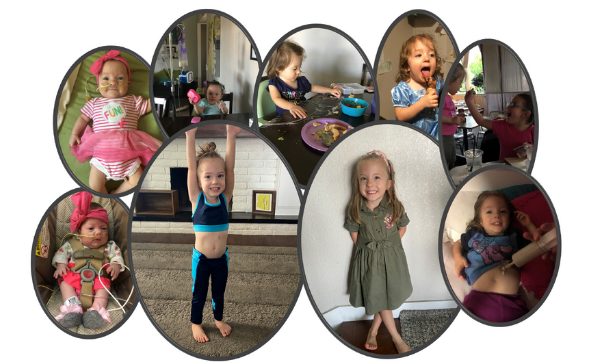
How do you know if your baby has colic or cow’s milk allergy?
Published by Reckitt Mead Johnson Nutrition on Nov 16, 2021
This article from enfamil.com can help you to understand the difference between excessive, unexplained crying caused by colic or cow’s milk allergy (CMA) and recognize main colic issues and indications to discuss with your doctor.
Could all that crying be signs of colic or CMA (cow’s milk allergy)?
All babies cry, but excessive unexplained crying in otherwise healthy and well-fed infants could be due to colic or an indication of a milk allergy.
What exactly is colic?
Colic is the medical term used to describe excessive, frequent crying in babies who otherwise appear to be healthy and well. The crying is usually very intense and tends to happen for at least three hours a day, for more than three days a week, and lasting for three weeks or more.
Colic Indications
Along with excessive crying for no obvious reason, other indications of colic in a baby could include:
- Pulling the legs up to the tummy
- Arching the back
- Stiffening the limbs
- Being full of gas
- Having a tense, bloated belly
When does colic occur and what causes it?
Colic usually begins within the first few weeks of life but often stops by the time the baby is four months old, six months at the latest. It is relatively common and thought to affect around one in five babies. Experts aren’t entirely sure what causes colic or why certain babies get it but not others. Food allergies, like cow’s milk allergy (the most common type of food allergy in infants and young children), are one possible cause. Babies with CMA are likely to experience colicky issues.
Could my colicky baby have a cow’s milk allergy?
If your baby has cow’s milk allergy, they might show other indications besides colic such as eczema, vomiting, and diarrhea. Take a look at these issues for more information on what to look out for, and talk to your baby’s doctor.
What can I do if my baby has colic?
Having a baby in tears all the time can be exhausting and worrying. It’s important to remember that colic doesn’t mean you’re doing something wrong. Looking after a baby with colic can be draining so don’t forget to look after your own wellbeing, too. Ask for help from family members or friends when you start to feel overwhelmed.
Here are a few suggestions to try for soothing your little one:
- Hold your baby in different positions – Try carrying him in an infant sling or front carrier on your chest as you walk around. The body contact and motion can be calming. To ease any gas, try laying your baby tummy-down across your knees while gently rubbing his back.
- Play calming sounds – Recreate the soothing womb environment with soft music, a fan, or a recording of a heartbeat.
- Use gentle, rhythmic motions – Steady movements are soothing. Cradle your baby while rocking in a chair, or try a vibrating infant seat.
- Massage your baby’s skin – Babies love skin-to-skin contact, and you might find that regularly massaging your baby makes them less irritable and eases their crying.
- Hypoallergenic formula – If your baby is bottle-fed, your doctor may recommend an extensively hydrolyzed formula designed for babies with cow’s milk allergy to reduce colic. In this type of formula, cow’s milk proteins have been extensively broken down, allowing your baby to digest the milk proteins more easily.
Talk to the Pediatrician
If you suspect your colicky baby might have CMA, make an appointment with your baby’s pediatrician and discuss your concerns.
To find out if cow’s milk allergy is causing your baby’s colic and other issues, your doctor may do some allergy tests and/or suggest putting your baby on an elimination diet followed by a food challenge.
Keep Learning
In the meantime, continue to learn about what could be upsetting your baby by finding out which foods have cow’s milk protein. Figuring out whether your baby is affected by colic or milk allergy can be essential to helping them deal with the issues they are experiencing.
Holiday Tips from our PFD Families
Published by Feeding Matters on Nov 10, 2021
 We try to plan things that don’t involve food. If there is food, we make a bigger deal about the people, event, and non-food treats.
We try to plan things that don’t involve food. If there is food, we make a bigger deal about the people, event, and non-food treats.- My 6 year old doesn’t like to sit at the table for long, so we try to plan non-food activities that allow her to sit and participate without a food focus.
- Depending on their needs, allow children to plan parts of the meal to help them feel involved. It may help them want to try new things! My daughter helped plan certain foods for Thanksgiving last year, and this helped her try new things. She didn’t eat much of them, but she sat more willingly with us at dinner because she wanted to see what everyone else thought of the food, and she was excited to try what she had planned.
- If my daughter receives food treats at a gathering or event (or Halloween) that she cannot or will not eat, she can trade them in for non-food items.
- Communicate, Communicate, Communicate. The sooner the better. We have so many good friends that really try to accommodate our daughter’s needs by providing safe treats or non-food items. We also communicate with our daughter ahead of events, preparing her for any food challenges that may present themselves.
- Offer to host at your home. I always host so I can plan safe foods. This takes the stress out of things and the kids have their rooms or areas were they feel safe once meals are prepped.
- Plan holiday activities that are not focused on food. Find non-food things to celebrate. We do a non-food advent calendar every year with fun kids items. For older kids you can do small gift cards, gold dollar coins, books, etc. Lego and other toys make wonderful Advent calendars that kids love (we already got the Lego ones at Costco!).
- At dinnertime, get fun activities for kids if they cannot have the food for any reason. There are many placemats, toys, and things kids can do at the table and still feel like part of the family dinner table.
- I suggest reaching out to families and friends in advance letting them know that you’ll need a quiet space to feed your child without interruption and/or that your child may not be present at the table with the rest of the party. It’s totally okay to request accommodations!
- Our son participates with food related activities such as getting candy ready for Halloween or making reindeer food for Christmas Eve by using tools to help provide another layer of security so he doesn’t have to touch the food. For example, he uses measuring cups to scoop out reindeer food, or tongs to help move rolls to a plate for Thanksgiving. We focus on doing tasks in short bursts, like asking him to move 3 pieces of candy and then praise, praise, praise.
The first PFD diagnosis in the US
Published by Feeding Matters on Oct 08, 2021
Families of children with pediatric feeding disorder around the United States have long struggled to advocate and explain their children’s struggle in part because there has never been a diagnostic code or name for PFD. That changed last week.
In collaboration with Desert Valley Pediatric Therapy in Arizona, Feeding Matters was connected with Easton and his mom Natalie. While Easton’s journey with PFD is not new, he is the FIRST child with an official PFD diagnosis, using the just-released ICD-10 codes. Hear from Easton’s mom about what having an official diagnostic code means to her and her family. We will follow Easton, and other families using the new codes, as they continue their journey with their official diagnosis of pediatric feeding disorder.
Feeding Matters is now gathering stories of families facing PFD. Celebrate the new diagnostic codes with us by reading these stories or sharing your own.
From our 2021 Community Event Honorary Chairs
Published by Feeding Matters on Oct 12, 2021
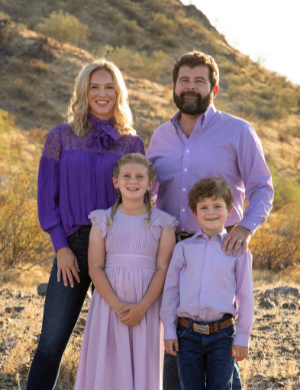
Philip John Calihan IV, “PJ” was born August 30, 2012, and was 8 pounds 6 ounces of perfection. Just over two weeks early, he was enormous. Big sister Claire was as excited as we were! PJ was the best baby, he was eating and growing and besides some projectile vomiting (which did not seem out of the ordinary since Claire had it too) all was right in our world.
By about four months old, we started seeing red flags. Each time we fed him, he had fits of choking and gagging followed by severe vomiting. We would no sooner “finish” breakfast and it would already be lunchtime. We didn’t know whether to start lunch or give him a break as we knew that the choking, gagging and vomiting would soon follow.
The choking and gagging got so bad that PJ began to refuse to eat at all and he lost two pounds in one month alone. We were scared to death; something was seriously wrong with our baby boy. We needed help and started searching for answers.
Around that time, I had been invited to attend the first Annual Feeding Matters Community Luncheon. While listening to the keynote speaker that day, I couldn’t breathe, my heart raced and tears began to pour down my face. Then Shannon Goldwater, founder of Feeding Matters, spoke and I was almost inconsolable; two people, in a matter of minutes, had experienced almost precisely, what my husband and I were going through at that exact moment. I felt as if these two people were talking directly to me in a room of hundreds; it was paralyzing and comforting at the same time. The pure isolation I had felt was dissipated because of Feeding Matters; I wasn’t alone for the first time in months.
Being paired with a mentor in the Feeding Matter’s “Power of Two” program changed our lives and the direction of PJ’s. As my family can personally attest, the Power of Two program is truly impactful, effective and life changing. Feeding Matters will be forever deep-rooted into our family’s history and we will be eternally grateful for the support of this organization.
Since that first luncheon, Feeding Matters has experienced considerable growth and in now a national organization supporting families and professionals worldwide. Their work is changing the trajectory of millions of children struggling with pediatric feeding disorder (PFD).
PJ’s feeding journey is a long one, still ongoing, but overall a success. We are firm believers that early intervention is prevention. Feeding Matters has been an integral part of our journey; they gave us hope when we had none. Phil and I are beyond proud to serve as this year’s honorary chairs and hope you will join us on November 5th to learn more about how you can support Feeding Matters and families like ours.
Stories of Resilience
Published by Feeding Matters on Nov 02, 2020
Welcome from Carter
Meet Carter, a child with pediatric feeding disorder and our event emcee, as he introduces our Stories of Resilience series!
Prevalence and ICD Update from Dr. Praveen Goday
Dr. Praveen Goday discusses updates in the field of pediatric feeding disorder.
Helping Others Along Their Journey, Monique White
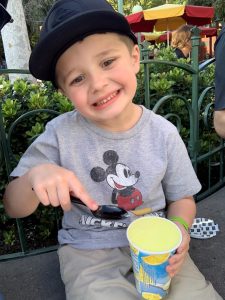 “The journey as a parent of a child with a Pediatric Feeding Disorder is a lonely one. People not on the journey cannot comprehend how someone can have so much difficulty doing something so basic as nourishing their child. As a Family Coach, I have the opportunity to walk along side another parent on this journey. I can ease their fears, hear their story and validate their feelings. Being a Family Coach with Feeding Matters is a unique opportunity that is needed to support our parents, children and families struggling with Pediatric Feeding Disorder.” -Monique White
“The journey as a parent of a child with a Pediatric Feeding Disorder is a lonely one. People not on the journey cannot comprehend how someone can have so much difficulty doing something so basic as nourishing their child. As a Family Coach, I have the opportunity to walk along side another parent on this journey. I can ease their fears, hear their story and validate their feelings. Being a Family Coach with Feeding Matters is a unique opportunity that is needed to support our parents, children and families struggling with Pediatric Feeding Disorder.” -Monique White
My Journey as an Adult with PFD, Ed Knight
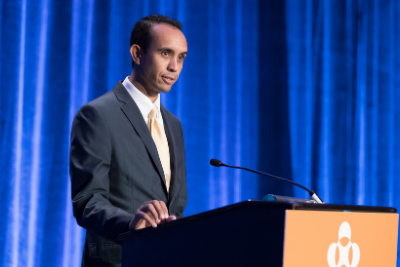 “A couple of days ago marked 4 years since I gave the luncheon speech. I was looking at the pictures today and remembering everything. On reflection, I can see that Feeding Matters has changed my life and helped me stay positive. They have fully accepted me for who I am and what I can do, rather than exclude me for what I can’t eat. When I think about the families who work so hard to find feeding solutions for their precious children (sometimes they seem like tiny milestones, but each step matters) and by seeing donors, volunteers and staff make innumerable efforts to help those small children and their families, I am inspired to keep trying–to keep trying to make it through another day of eating too, to find my own milestones and celebrate them. I know that someone will be there to help me. And maybe I can be of some small help to someone else too.” -Ed Knight
“A couple of days ago marked 4 years since I gave the luncheon speech. I was looking at the pictures today and remembering everything. On reflection, I can see that Feeding Matters has changed my life and helped me stay positive. They have fully accepted me for who I am and what I can do, rather than exclude me for what I can’t eat. When I think about the families who work so hard to find feeding solutions for their precious children (sometimes they seem like tiny milestones, but each step matters) and by seeing donors, volunteers and staff make innumerable efforts to help those small children and their families, I am inspired to keep trying–to keep trying to make it through another day of eating too, to find my own milestones and celebrate them. I know that someone will be there to help me. And maybe I can be of some small help to someone else too.” -Ed Knight
Resilience, Bill and Judy Schubert
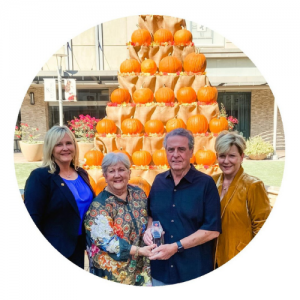 “Resilience has been redefined for many of us this year! We are finding our lives turned topsy turvey because of matters outside our control. It is frustrating; it is debilitating. It is the exact feeling that families who have children with a pediatric feeding disorder have experienced for a long time….. until Feeding Matters stepped up to come to the forefront. Resilient defines these families. They know now how to step up, join hands and hearts, identify and define ….overcome. Finally see light at the end of the tunnel. Breathe again. We are in awe.” -Bill and Judy Schubert, 2020 Visionary Award Attendees
“Resilience has been redefined for many of us this year! We are finding our lives turned topsy turvey because of matters outside our control. It is frustrating; it is debilitating. It is the exact feeling that families who have children with a pediatric feeding disorder have experienced for a long time….. until Feeding Matters stepped up to come to the forefront. Resilient defines these families. They know now how to step up, join hands and hearts, identify and define ….overcome. Finally see light at the end of the tunnel. Breathe again. We are in awe.” -Bill and Judy Schubert, 2020 Visionary Award Attendees
Finding Support from Feeding Matters, Carter’s Mom Jessie
Carter’s mom Jessie found the support she was looking for from Feeding Matters.
Sharing our Story, Stephanie Stillman
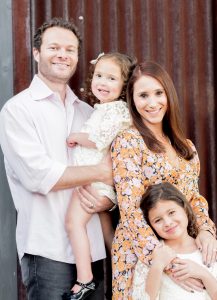 “The Feeding Matters luncheon is always such a special experience for me. As a mom of two children who have PFD, hearing the stories of other families is such an inspiration! It is so important to my family to share with others all the wonderful work the foundation has accomplished in the past year helping them understand more about PDF and the experiences my family has faced.” -Stephanie Stillman
“The Feeding Matters luncheon is always such a special experience for me. As a mom of two children who have PFD, hearing the stories of other families is such an inspiration! It is so important to my family to share with others all the wonderful work the foundation has accomplished in the past year helping them understand more about PDF and the experiences my family has faced.” -Stephanie Stillman
Treating PFD with Teletherapy, Susan Hodges, OT/L
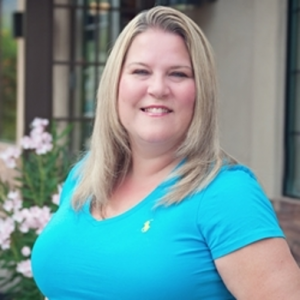 “Pediatric Feeding Disorder affects children and their families regardless of their proximity to quality healthcare or unexpected life restrictions such as what we are experiencing with the current pandemic. Teletherapy is a viable alternative to in-person feeding therapy services as it provides the opportunity for evidenced-based coaching of the child, parent or other caregiver using what is readily available to them inside the comfort of their own home.” -Susan Hodges, OT/L
“Pediatric Feeding Disorder affects children and their families regardless of their proximity to quality healthcare or unexpected life restrictions such as what we are experiencing with the current pandemic. Teletherapy is a viable alternative to in-person feeding therapy services as it provides the opportunity for evidenced-based coaching of the child, parent or other caregiver using what is readily available to them inside the comfort of their own home.” -Susan Hodges, OT/L
About the Power of Two Program from a Family Coach
A Family Coach from our Power of Two Program discusses how she has received support from the program, and has been able to give back to other families.
See You Tomorrow! Carter
View the Community Virtual Event here, Thursday, November 12, 2020 at 9am AZ, MST/11am EST! The event is free to attend.
One Family’s COVID-19 Journey
Published by Dustin Bowers on Jun 30, 2020
The COVID-19 pandemic has tested resiliency worldwide, pushing people and entire societies far beyond anything they had anticipated. We who have children with pediatric feeding disorder already know what it is like to have something beyond our control readjust our limits far beyond what we thought possible. Despite this experience, the arrival of COVID-19 and it’s barely mitigated spread have added cruel new challenges to our struggles with caring for and nourishing our children. In the spirit of sharing and mutual support that runs through Feeding Matters, I’ll share some of my family’s experiences during the COVID-19 pandemic. I hope the hearing of our story will be as helpful as the telling.
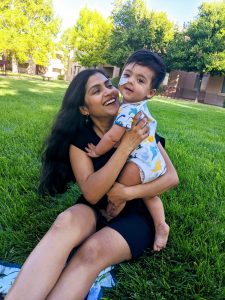
Far and away the most striking similarity of COVID-19 and caring for a child with a feeding disorder is isolation. My son is still an infant, and his feeding refusal began in earnest in mid-January 2020. What used to be eight 45 minute sessions with a bottle exploded into elaborate and constantly changing rituals to try to coax him to drink milk and then put him to sleep to dream-feed.
With the placement of his NG tube in mid-February, some of the burden was relieved, only to be replaced with constant fretting and delays to make sure the pump did not trigger vomiting. Remarkably, once the country started to get serious about COVID-19 in March, I had already been almost entirely socially distant for roughly two months. The only difference was that where everyone else was isolating out of self-preservation or solidarity, it was our desperate effort to nourish our baby that had sequestered me and to a lesser extent my wife. We learned how all-consuming feeding disorders are because they cut you off in the same way as when humanity tries to save itself from a devastating disease.
While COVID-19 made everyone isolated like us, it also raised the stakes of every cough and sniffle. My son mercifully is not immuno-compromised, but COVID-19 could cause havoc by making my wife or myself ill, and it could kill my mother-in-law, who is staying with us. Unfortunately my wife’s work as a physician means that not only is she required to continue working, but that she is regularly exposed to COVID. Just last week I came down with what was ultimately just a cold, but until the COVID test came back, I needed to isolate myself from the entire family within our small apartment. I wouldn’t want to overstate our hardship, but my son does not understand social distancing, and it was disruptive for me, his primary caregiver, to essentially vanish. Unfortunately, we will continue to live on this knife’s edge for the foreseeable future.
As it became clear that this multi-layered isolation would not end soon, and as we realized that the difficulties and stresses of our son’s would not abate, we finally followed up on our doctor’s recommendation of Feeding Matters. I can say without hesitation that Feeding Matters is the best antidote to the isolation and doubt of caring for a child with a feeding disorder. We have been glad to attend the semi-monthly virtual support group meetings, and the staff has been extraordinarily empathetic and attentive in reaching out not just for our initial intake, but several times since.
However, without question the most helpful part of the program has been the individual family coach. Physicians and therapists have so far generally been kind and full of advice, but we needed a relatable connection to someone who has had to live with our issues and has come out the other side. Our family coach has been warm and friendly, and has gone beyond simple mentoring to virtually open up her home and her family to us. She has even had her mother talk with my mother-in-law about the ins and outs and do’s and don’ts of helping us help our son. After all this time of lonely ounce counting and desperately hoping for a break-through, this contact with someone who understands has been literally indispensable.
From the bottom of my family’s heart, we would like to say thank you to Feeding Matters.
Dustin
Shine The Light: Stephanie and Brian
Published by Stephanie Sanstead on Feb 14, 2020
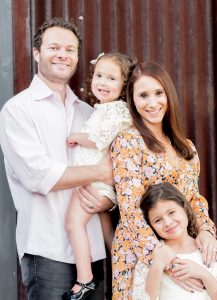
I see joy all over this house. I see it framed in photos, affixed to refrigerator doors and spilling out of toy boxes.
The house belongs to Stephanie and Brian Stillman, and I know, walking into it, that I’m entering a place where the tipping point between health and hardship is very delicate and very real, where a family has been tested in unimaginable ways. But there is no sense of sadness or secrecy or fear here. This household is flourishing. I’m greeted by Stephanie Stillman. Her voice is confident, welcoming. Her physique strong and tone, no stranger to a sophisticated top knot and yoga pant. She’s definitely a mamma bear. Have you ever met someone who has stared down an angry sea and won? They walk and talk differently than the rest of us. That’s Stephanie Stillman. A force bigger than her tried to alter her family’s story and redefine their lives. But she and her husband, Brian, pushed back and the ocean stilled. As I move through the house, I get a sense of who the Stillmans are. There are wall-to-wall, pink-and-white toy bins filled with puzzles, dolls, tea sets, plastic fruit and all manner of things that sparkle. There’s a playroom any child would love, complete with a small couch, a play table and bookshelves loaded with colorful books. One wall is a photo gallery dedicated to Stephanie and Brian’s two daughters, 8-year-old Zoey and 5-year-old Pyper; on the other wall hangs a cork board covered with the girls’ preschool artwork. It is a home, like so many others—including my own—that pulses with the spirit of a child. That’s why things stand out in the Stillmans’ house that aren’t typical. Evidence of feeding tubes in pictures, literature, books and pamphlets. After spending any amount of time at the Stillmans it becomes clear that a big chunk of Stephanie and Brian’s lives has been devoted to providing nourishment to their daughters by any means necessary. Both Zoey and Pyper were born with adrenal insufficiency, a disorder that occurs when the adrenal glands don’t make enough of certain hormones, including cortisol (the stress hormone), which is essential for life. When the girls experience any sort of health crisis, from the flu to a broken bone, their bodies cannot produce cortisol. This condition can be fatal if untreated. The diagnosis complicates any medical problems including and relating to feeding issues. Those issues have been at turns confounding, heartbreaking, infuriating and galvanizing. Had I visited the Stillmans several years ago I probably wouldn’t have found anyone at home. Back then, they spent a lot of time driving around Phoenix to various appointments—to the offices of occupational therapists and physical therapists and caregivers—as they embarked on a medical journey that continues today. — The Stillmans met at the University of Arizona, where Brian was studying regional development and Stephanie was studying communications. They began dating one year after completing college and moved to Phoenix to pursue their respective careers. Stephanie was born and raised in Memphis; Brian grew up in Los Angeles. They married in 2008 in Palos Verdes, Calif. Zoey Stillman was born Oct. 2, 2011, after Stephanie labored for 30 hours. The Stillmans were the first of their friends to have a baby and were elated to begin the new journey. But elation soon turned to concern. During Zoey’s newborn screening the Stillmans learned she had adrenal insufficiency. Zoey spent the first seven days of her life in the NICU and was no stranger to the hospital for that early season. When she was 14 months old Zoey got really sick with the flu. It was impossible to get it under control and led to reflux and several visits to the hospital. Then, after recovering, she caught the flu again. Eventually, Zoey just stopped wanting to eat. So began her feeding challenges. Doctors fitted Zoey with a nasogastric tube (NG tube), which carries food and medicine to the stomach through the nose. Stephanie and Brian spent several days in the hospital with Zoey before she was finally released. But four days later the Stillmans were back again. Zoey wasn’t eating. “As a mother you just feel like you are failing,” Stephanie tells me. “Eating is the most natural thing in the world. I remember constantly thinking, ‘She just has to eat. She has to.’” But she didn’t. She wouldn’t. After a third visit to the hospital, doctors discharged Zoey with the NG tube still inserted. Stephanie remembers telling the nursing staff, You cannot send her home without taking the NG tube out. I try to imagine the trauma. New parents who want nothing more than to provide care and comfort and cuddles to their baby girl suddenly have to learn how to stick a tube into her nose, pushing it down to her stomach, without accidentally puncturing her lungs. Just getting a 16-month-old toddler to hold absolutely still is an epic feat. Now this. Zoey was supposed to have her NG tube for a few weeks. She had it for eight months. Then her doctors and the Stillmans started having serious conversations about inserting a full gastrointestinal tube (G-tube) into Zoey’s stomach. A gastrostomy tube (G–tube) is a tube inserted through the abdomen that delivers nutrition directly to the stomach. It’s one of the ways doctors can make sure kids with trouble eating get the fluid and calories they need to grow. Stephanie remembers her pervasive thought at the time: No Surgery. This is too scary. Too permanent. They ultimately chose not to get a G-tube for Zoey. Around this time, in 2012, Stephanie found Feeding Matters (then called Popsicle). The organization introduced the Stillmans to several feeding programs at Phoenix Children’s Hospital, and provided information about GI doctors, specialty feeding therapists, OT sensory-related therapists and nutritionists. Stephanie says the connections they made through Feeding Matters gave her and Brian their first feeling of true hope during the most stressful time in their lives. In 2013, Stephanie quit her job as a Pilates instructor to keep up with the feeding schedules, the therapies and the making of Zoey’s all-natural food. Zoey never actually received a PFD diagnosis, which meant the Stillmans paid for many therapies out-of-pocket. They had to get really creative to get treatments coded for insurance. Stephanie thinks that if Zoey had received a PFD diagnosis, they could have done more private therapies and potentially eliminated the tube sooner. It also could have given them a sense of what they were dealing with. As far as they knew, Zoey just wouldn’t eat—perhaps it was reflux, perhaps not. One thing was certain: As parents, they battled feelings of guilt and worried constantly that maybe they did something wrong or failed their daughter. Around the time Zoey turned 3 years old, Stephanie and Brian established a rhythm and routine with her. Zoey was eating and maintained a healthy weight, which enabled her to curtail her hospital visits. The Stillmans embraced their feeding-issue story and became very involved in Phoenix Children’s Hospital’s food school and group-feeding programs. Stephanie vividly remembers the day she stopped counting Zoey’s every calorie and journaling every morsel of food. This freed up space in her mind where these daily responsibilities always loomed. This is not the picture of early parenthood the Stillmans envisioned when they started their family. But it’s a life they embraced with grit, grace and tenacity. Lying in bed, thinking about how Zoey’s NG tube, bag and pole were holding her back from learning to walk, Stephanie’s pillow would become wet with warm tears. Still, as the seemingly impossible gradually became routine, the Stillmans were excited to grow their family. Knowing that adrenal insufficiency was genetic and a second baby had a 1 in 4 chance to have the same condition, they plunged headlong, into the next chapter of their story. — Pyper Stillman was born Dec. 2, 2014. Her newborn screening picked up the presence of adrenal insufficiency. She was in the NICU within the first 6 hours of her life and stayed there for 24 days. We’ve got this, Stephanie remembers thinking. We’ve walked this road. We have the whole team in place from Zoey’s journey. Twenty-two days after Pyper’s birth, at Stephanie’s urging, the Stillmans got to take their new baby home for Christmas. Pyper had an NG tube, and there was once again plenty of PT, OT and speech therapies in the Stillmans’ future. When Pyper was 4 months old, the NG tube came out. Then she got pneumonia. The NG tube had to be reinserted. When Pyper was 6 months old, doctors conducted a swallow study and found that she had been silently aspirating—food or liquid was entering her lungs. After a bronchoscopy and a laryngoscopy, then consultations with GI specialists, pulmonologists and ENTs, Stephanie and Brian still had not received a diagnosis that explained why Pyper was aspirating. On Sept. 30, 2015, they removed her NG tube; after three more hospital stays Pyper had a full G tube inserted. She was 8 months old. The Stillmans got all of their familiar support teams in place. That’s when they rediscovered Feeding Matters. They needed the assistance more than ever. “I remember Feeding Matters being a place where other moms could give me advice, listen and understand,” Stephanie says. “None of our other friends or family could relate to the struggles of feeding. They couldn’t fathom the amount of medical supplies or worry that came with every meal. I finally had a connection to other families that were going through similar things. I didn’t feel crazy anymore. It was easy to second guess ourselves those days. I felt like if something wasn’t working I had a place to turn that wasn’t a doctor’s office where I would likely have to wait weeks for an appointment.” Pyper had even more complicated feeding issues than Zoey, with a diagnosis of Silent Aspiration. She had a physical response to even seeing a dab of baby food on a therapist’s nose. She needed OT to even look at food, touch food, be in the same room as food. Read that again. Now think of a child you love. Think of a child you love being physically uncomfortable just being in the same room as food. Now imagine being their parent. Weeks of feeding programs followed, with the goal of getting Pyper to take half of her food orally. She was subjected to painful Modified Barium Swallow Studies (MBS), a fluoroscopic procedure designed to determine whether food or liquid is entering a person’s lungs. The Stillmans visited seemingly every specialist at Phoenix Children’s Hospital—aerodigestive specialists, immunology specialists, hematology specialists. They filled out what felt like a million intake forms, spent hours in waiting rooms and asked dozens of questions without getting answers. Then it came—difficult news dressed up as relief in the form of a diagnosis: Familial Dysautonomia. It’s a genetic disorder that affects the development and survival of certain nerve cells. The disorder disturbs cells in the autonomic nervous system, which controls involuntary actions such as digestion, breathing, production of tears, and the regulation of blood pressure and body temperature. Every child with this disorder aspirates and has low tone. Pyper is the only child in the world ever to be diagnosed with both Familial Dysautonomia and adrenal insufficiency. It’s hard to explain what that life looked like. Imagine first the tangible necessities. The feeding-tube supplies: pump, medical pole with wheels, bags for formula, formula pouches, adapter ports, the G-tube insertions, the NG tube, innumerable bottles of PediaSure. Then there were percussion vests, cough-assist machines, inhalers, blood-pressure monitors, glucose readers. The Stillmans’ refrigerator was filled with medicines, and their sink-side drying rack was perpetually packed with supplies that needed to be cleaned daily: bi-pap supplies, cough-assist masks, syringes and more. Beyond all that, there were the countless hospital visits and sleepless nights in NICU, the coffee-fueled hours spent at the kitchen table trying to learn about home healthcare and insurance coding, the Googling of specialty formulas from Germany. Distractions and excursions were difficult. A trip to the zoo, a common outing for many parents, was made nearly impossible by the realities of being tied to therapy and feeding times. The orange tube across your child’s face eliciting stares from passersby, and the threat of a tube withdrawal away from the sterile and safe environment of home weighed heavy on her parents’ minds. — It needn’t be said, but I’ll say it anyway: Most of us don’t spend much time thinking about our children’s relationship with food. Eating is a routine. It occurs three times a day, at every social engagement, every holiday, every birthday party. We can’t fathom the isolation that engulfs children and their parents when traditional feeding is not accessible to them. Kids’ peers are acutely aware of who or what is different. Even as adults we are susceptible to thinking, How does somebody not eat? It’s intrinsic. Empathy is a difficult bridge to engineer, especially for children. The stones must be laid by the hands of caring parents. Stephanie tells me about the time she stood at the front of Pyper’s pre-K classroom singing a Daniel Tiger jingle: “In some ways we are different, but in so many ways we are the same.” Fighting back tears, she hoped she could protect her daughter with the help of a sweater-clad plush tiger who wants to know if “you’ll be his neighbor.” She encouraged her daughter’s classmates to find ways that they were the same as Pyper in spite of the “different” way she has to eat and drink. Listening as Stephanie graciously walks me through her family’s story, even—and especially—the painful parts, reinforces and expands my understanding of a mother’s power. It’s impossible not to be moved by the depth of her love for Zoey and Pyper, and the persistence with which she fights for them. In some ways we are different, but in so many ways we are the same. I saw joy everywhere in the Stillmans’ house because of the familiarity of things—framed photos and toy bins and preschool artwork. I now know that, in this home, sameness is hard-earned. In my mind, that only magnifies the joy, and I can’t help but take a little with me when I leave.Poems and a Loss of Words
Published by Jeremiah Blue on Oct 29, 2019
“I made myself a snowball,” Sandra presents to her son Mason, rehearsing a Shel Silverstein poem he will recite for his third-grade class.
Standing as tall as he can at just under four feet, his fingers fidget through his short dark hair. Mason takes a moment to clear his mind before he repeats the line.
“Good. Now, As perfect as could be…” Sandra continues.
“As perfect as could be,” his tiny voice still a little unsure of itself.
“How about two lines this time?”
“Sure.”
Straightening his back and pushing out his chest, trying to make himself feel confident, Mason clears his throat. His hands are clasped behind his back, wiggling with nerves. He takes in a deep breath as he stares at the ceiling of their living room, trying to remember two whole lines in a row.
Slowly but carefully, he recites, “I thought I’d keep it as a pet…And let it sleep with me.”
Sandra contains her bubbling pride but lets out a burst of praise.
“Perfect. Nice job!”
With a quick smile, Mason’s face falls back to looking worried again, but not about remembering the lines of the poem this time. His question is much bigger than that now.
“But I don’t have to do it in front of the whole class, right, Mom?”
“Nope. Not at all. It will be just you and the teacher.”
***
The rest of the kids in Mason’s grade are required to recite their poems in front of their entire class, usually four to five times a year. Sandra understands her son all too well, and she knows that reading a poem in front of the other students will not be an option.
Four years earlier, Mason had completed an intensive feeding therapy program and been cleared to have a feeding tube removed from his belly. His parents began taking him to a counselor out of a concern for his mental and emotional health. Pursuing a diagnosis led Mason to be regularly seen by an array of doctors, undergoing constant testing and assessment. His parents correctly intuited that so much pain, discomfort, and continuous exposure to medical evaluation would take a toll on such a young child.
Once Mason began kindergarten—his first full-time school environment—it became clear that his health challenges were changing and evolving. He was free of the feeding tube and able to eat a limited amount of foods reliably without significant issues now. But his parents could not have anticipated the influence it would have on his socializing and functioning at school. It became clear very quickly that Mason was living with a constant sense of fear and physical pain. At first, his teachers and counselors assumed he might have autism, because he was too afraid to make eye contact or speak to anyone but his mom and his sister, Milana. Even talking with his dad, Mike, became difficult for Mason. He would often communicate through his mom. Eventually, a therapist diagnosed Mason with a disorder called selective mutism. The condition is a complex childhood anxiety disorder characterized by a child’s inability to speak and communicate effectively in select social settings. Mason found himself unable to communicate with teachers or other students at school, even when he was in pain. His co-existing diagnosis of cyclic vomiting syndrome, a part of the pediatric feeding disorder umbrella, often causes him to vomit for no reason or to vomit without being able to stop. It left him in chronic discomfort and anxiety. Still, he was too afraid to communicate with the teacher.
While in class one day, he knew that he was getting sick and needed to find a place to relieve himself. The medication he takes for the syndrome helps manage the symptoms and discomfort, but it doesn’t always work. A trash can sat not too far from his desk in the classroom, but fear was paralyzing Mason. He didn’t want anyone to know he was sick—a part of his desire to go unnoticed, to not draw attention to himself. Without being able to control the episode and unable to bring himself to tell the teacher, he instead threw up on his desk, in the middle of class time.
The paralyzing anxiety of selective mutism stops Mason from communicating about even his most urgent needs.
***
The day after practicing lines with his mom, Mason stands in front of the teacher to recite his poem. His arms are tightly strewn behind his back again, hands clasped together and turning over one another, legs visibly shifting from one to the other. The nerves from last night’s rehearsal are still real—even worse than before, now that Mom isn’t around. And he has to recall more than just the two lines. It’s the whole thing this time.
“Ok, Mason, whenever you’re ready,” the teacher says to him in a quiet room, empty but for the two of them.
Mason does not respond.
His eyes wander the floor. Anywhere but in the direction of the teacher. Avoiding any eye contact.
Finally interrupting the silence and Mason’s meandering gaze, she realizes her mistake. She and Sandra spoke about this dynamic and had agreed to what could work best for Mason.
“I’m sorry, Mason. I forgot to turn around.”
Pivoting to face the wall, away from Mason, she is no longer looking directly at him. With more confidence this time, he begins the first line, “I made myself a snowball…”
All the doctors and therapists and nurses, with their testing and poking and prodding, have left Mason uncomfortable with adults, mainly when they focus attention on him.
With the teacher’s back turned and her gaze diverted from him, Mason finishes the poem, reciting each of the lines, naturally and fluidly.
“Nice job, Mason,” the teacher affirms. “You know, you’re really good at this.”
The expression on Mason’s face is still tight with nerves, but a small smile forms and his eyebrows prick upwards with a hint of more confidence and relief.
“Thanks. Maybe someday I’ll do it in front of the other kids.”
***
The accommodation for the poems is only one part of the many arrangements that Sandra and Mike have to make for Mason so that he can attend school. A month before each school year begins, Sandra meets with counselors to talk about the unique facets of Mason’s personality, medical history and conditions. They also discuss what to expect of how this can influence his interactions with other teachers and students. Sandra will then meet individually with the teacher, explaining the details all over again.
One year, she chose not to reveal all of Mason’s medical history or symptoms with the teacher. She wanted to leave room for him and the teacher to develop their relationship and bond together. Never again. The teacher’s lack of understanding resulted in regular punishment for Mason. Punishment for when he wouldn’t speak or wouldn’t sit with the other students, or when he stayed in the back of the room because he was silently enduring sickness and pain again.
The ripples of Mason’s health extend beyond his experiences at school and with food, beyond his anxiety disorder and his syndrome. His big sister has also struggled. Milana, older by two years, didn’t understand why Mason gets so much attention and special treatment.
At a family dinner, Milana decided it was time to speak with her parents about it. She turned to her mom and pointed out that Mason was using the iPad at the table.
“That’s not allowed, Mom. I couldn’t do it,” she pointed out with diplomacy and wit. “Mason even gets to stay up late sometimes. It doesn’t seem fair.”
Sandra and Mike have been forced to improvise around Mason’s evolving health challenges and their management of it. They have mostly settled on no longer prioritizing a diagnosis over trying to be happy and thrive, in the absence of answers they have long and busily pursued. They had initially hoped a diagnosis would be the key to finding treatment and moving on. Instead, now, they focus on the day-to-day, the attempt to be as confident and comfortable with their understanding as parents. They are continually refining their ability to morph, learn, and adapt on their own to the new and compounding challenges that arise. Sometimes, that means their approach to parenting with Mason means different things than it means for the more independently functioning Milana. But Milana still feels it in her life—and feels it deeply.
At the dinner table that night, with conviction and clarity, in front of the whole family, she asked her parents a straightforward and emotional question.
“Why do you love Mason more than me?”
It’s a question that pierces deep into a parent or anyone who cares and loves for someone as profoundly as Sandra and Mike loves Milana and Mason, equally.
Mason faces the challenges of pediatric feeding disorders like cyclic vomiting syndrome and the anxiety disorder of selective mutism. But his entire family is intimately entwined with the ongoing and ever-changing circumstances they face.
***
By the end of the school year, Mason has had the chance to recite a few more poems. Just himself and the teacher, no classmates. The teacher’s back always turned so he can manage his fear and anxiety.
For his final recitation of the year, Mason and Sandra are practicing again in their living room. He chooses a little longer poem this time, something slightly more challenging than his first attempt. His confidence is growing. And the rehearsal with his mom goes as planned like it always does. Nothing has changed. They learn the lines, repeat them to one another, and Mason gears up to present with the teacher. Sandra has no reason to believe anything is different this time. Neither Mason nor the teacher mention any changes.
But that is not the case. Mason comes home with a report card from his teacher. Sandra opens it up and is happy to see that the grades are positive. She catches something in the remarks about his poem, though: Mason read the poem in front of the entire class.
Astonished and initially upset that the teacher would alter the agreement the two of them had decided on before the year started, Sandra asks Mason about it.
Her face shows a clear sense of confusion and concern.
“Mason, you read your poem in from of the entire class?”
Mason does not bat an eye. He looks at her, with all the innocence of a small child—Mason’s innocence even more pronounced by his quiet and passive demeanor. But his response is plain and clear.
“You thought I couldn’t do it, but I could do it. So, I did it.”
Sandra is shocked. And then, quickly, prouder than she could have imagined being at this moment.
She had been mowing the proverbial lawn for Mason for so long—preparing special meals different from the rest of the family, or meeting with countless teachers and counselors, or fillings out endless forms, or directing and monitoring Mason closely for his safety and comfort. And now he has joined her in pushing the mower across the lawn. He understands the need to challenge himself and try new things.
So, he did.
In the same way, years earlier, following a session in intensive feeding therapy, the family was encouraged to try new things slowly. They decided on going for pizza, a family favorite. Mason had a fear of foods he described as “wet.” To him, a saucy and cheesy pizza was certainly wet. But like the therapist and his parents encouraged him, Mason challenged himself and tried it. Then, promptly gobbled the entire piece down. No issues.
***
A village has been assembled, by Sandra and Mike, to participate in Mason’s life and health. And Mason certainly has a hand on the figurative lawn mower, helping forge his path through the dense and often murky landscape.
But there is no doubt that a great deal of mystery and angst accompanies Mason and his family. In the last three years, since he started school, a whole new world and set of challenges have evolved. A series of unexpected things. His parents learn each day, each month, and each year anew. Doctors still offer minimal clarity on the disorders or treatments related to pediatric feeding. Not to mention rarely providing perspective on the traumas that result in a child. Or their families and communities.
Sandra, Mike, and Milana were happy to hear those words, “I could do it. So, I did,” from Mason, and to see him gobble down one of their family’s most celebratory foods. And they perpetually wait to understand how their lives and health will change and evolve. They are poised and on alert for how to manage the continuous novelty of it all. Hope and anxiety, good days and bad days, victories and failures—these are the things that define their daily lives. They remind themselves to be patient and kind because everyone has a story.
But Mason and his family live a story with far more mystery and unanswered questions than the average family. Clarity on treatment and diagnosis for Mason is most often silent. An utter loss of words or the ability to communicate about pain and paralyzing anxiety.
Much like the absence of words Mason experiences in his young life.
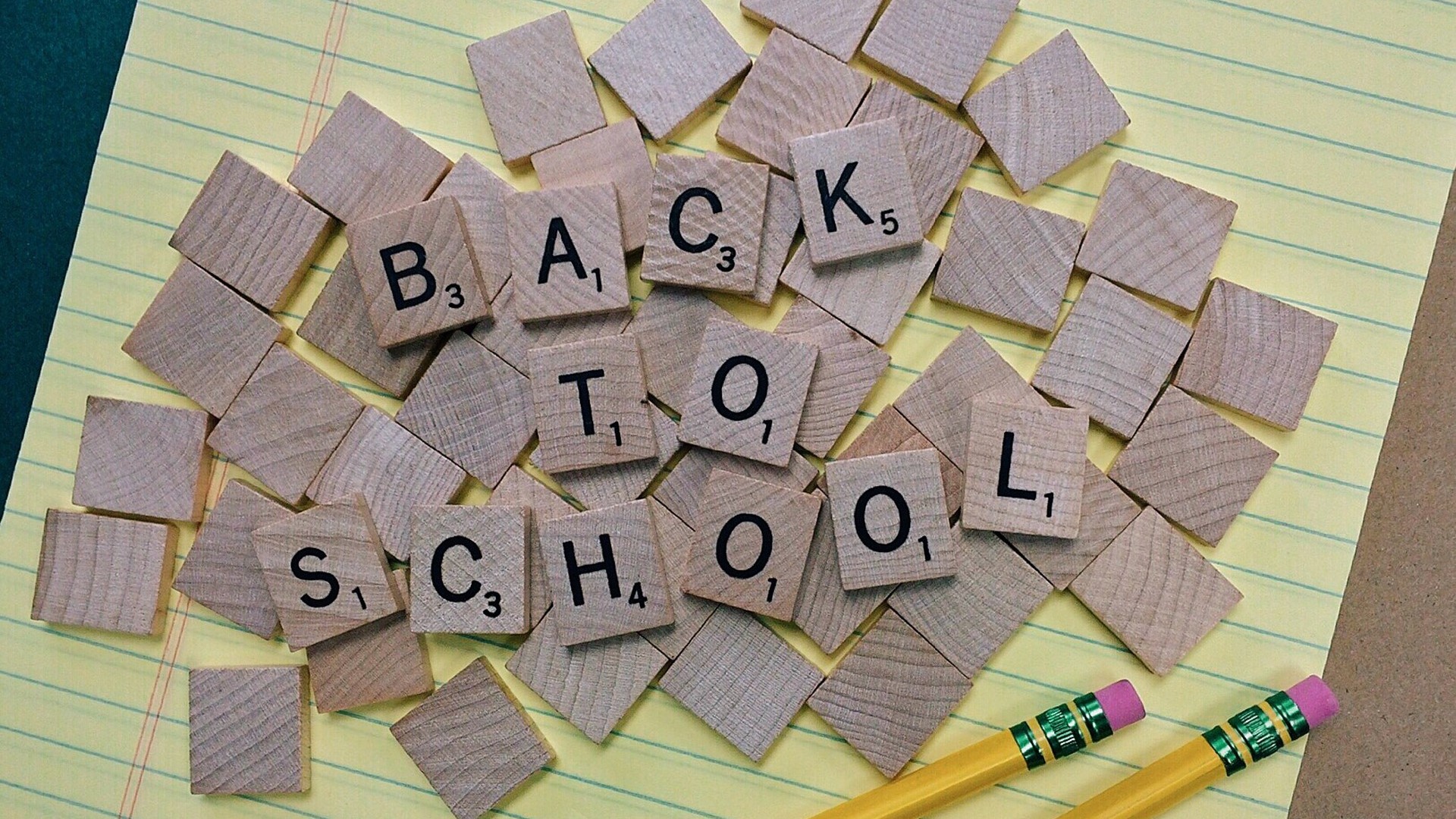
Back to School Time!
Published by Alba Chester on Aug 20, 2019